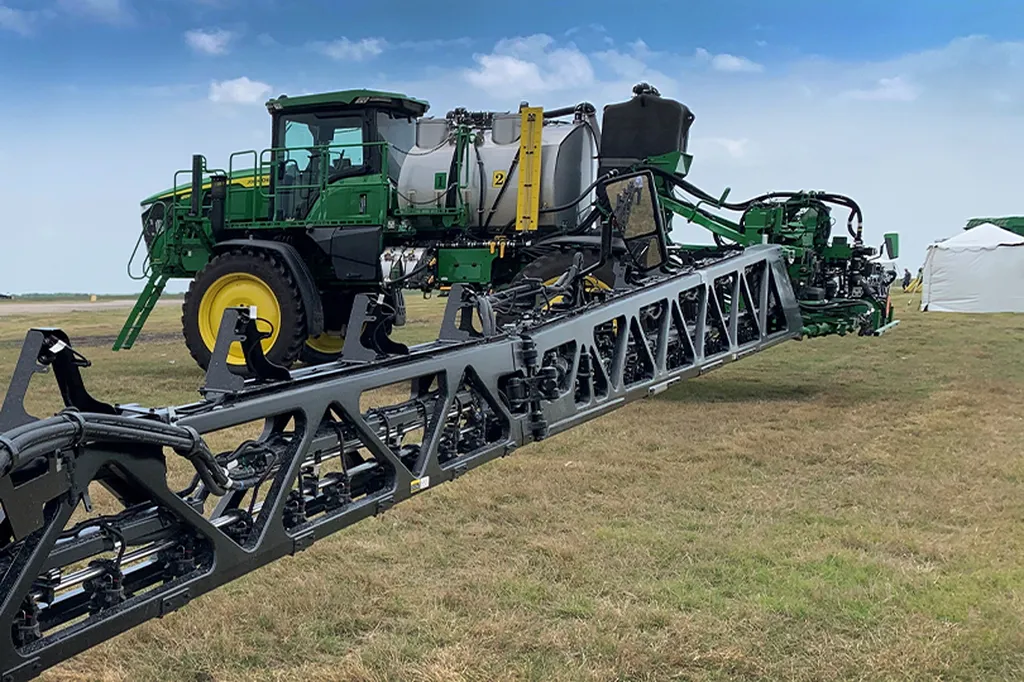The Association of Equipment Manufacturers (AEM) has re-released its comprehensive study on precision agriculture, originally published in 2021. The updated report, “The Benefits of Precision Ag in the United States,” now includes fresh field data and firsthand farmer insights, offering a compelling look at how precision agriculture technologies are enhancing crop yields, reducing inputs, and bolstering the resilience of America’s food supply chain.
Doug Griffin, a partner at AEM member company Kearney, a global consultancy firm that developed the report, emphasized the importance of making the study accessible to a broad audience. “We wanted to make this study something people from outside the agricultural industry could relate to,” Griffin said. “For agriculture professionals, some of the information may seem obvious at times. But for others, including policymakers, it’s not.” The report, available on AEM.org’s Insights page, highlights how precision agriculture has enabled farmers to produce more crops on less land while reducing the use of water, fertilizer, herbicides, and fuel. This is crucial for policymakers and the general public to understand, as farming practices often face undue scrutiny that isn’t rooted in science.
AEM collaborated with the American Farm Bureau Federation, American Soybean Association, CropLife America, and the National Corn Growers Association to develop the report. During an AEM Member Education webinar on October 16, Griffin was joined by representatives from these organizations to discuss the findings. Carson Fort, government affairs manager at the American Soybean Association, noted the economic and environmental benefits of precision agriculture technologies. “The evidence presented in this report helps show that these technologies don’t just make sense environmentally; they make economic sense as well,” Fort said. “This is especially important at a time when growers face significant headwinds. The farm economy remains difficult, input costs are high, markets are volatile, and new challenges like the Make America Healthy Again (MAHA) Commission have added additional uncertainty.”
The report focuses on five key areas of precision agriculture technology: auto guidance, machine section control, variable rate application, fleet analytics and telematics, and precision irrigation. Analysis of data from the past couple of decades underscores the notion that farmers have been producing more with less, thanks to these technologies. Key findings include:
– Annual crop production up 5%
– Water use down 5%
– Fuel use down 7%
– Fertilizer use down 8%
– Herbicide use down 9%
These gains have been achieved with relatively low technology adoption across the industry. The report also forecasts additional gains that could be realized with more widespread adoption:
– Annual crop production up another 6%
– Water use down another 20%
– Fuel use down another 7%
– Fertilizer use down another 14%
– Herbicide use down another 12%
The implications of these findings are significant. As the global population continues to grow, the demand for food will increase, and precision agriculture technologies offer a sustainable solution to meet this demand. By reducing the use of inputs such as water, fertilizer, and fuel, farmers can lower their operating costs and improve their profitability. Additionally, the reduced use of herbicides and fertilizers can help protect the environment and improve water quality.
Moreover, the report highlights the importance of continued investment in precision agriculture technologies. As adoption rates increase, the potential gains in crop production and reductions in input use could be even more substantial. This is particularly important in the face of climate change, which is expected to bring more frequent and severe weather events that could disrupt food production.
In conclusion, the re-release of AEM’s study on precision agriculture offers a timely and valuable look at how these technologies are transforming farming practices. By producing more with less, farmers can meet the growing demand for food while protecting the environment and improving their bottom line. The report serves as a call to action for policymakers, industry leaders, and farmers to continue investing in and adopting precision agriculture technologies.

